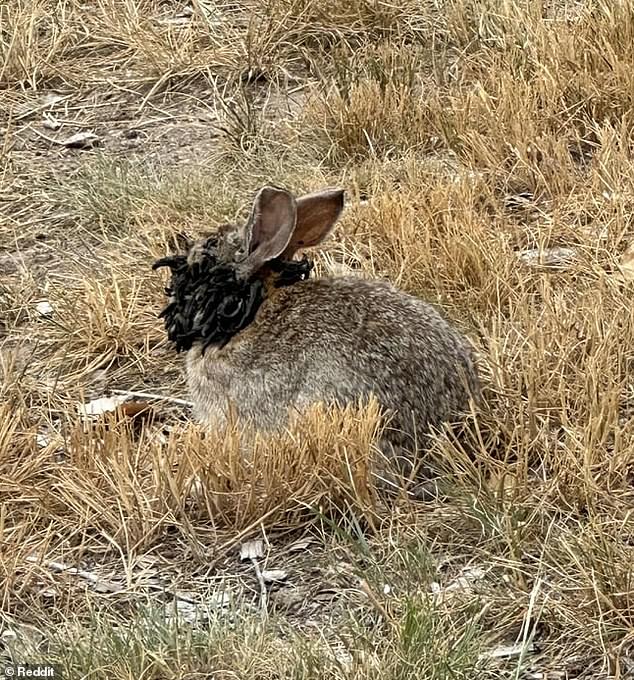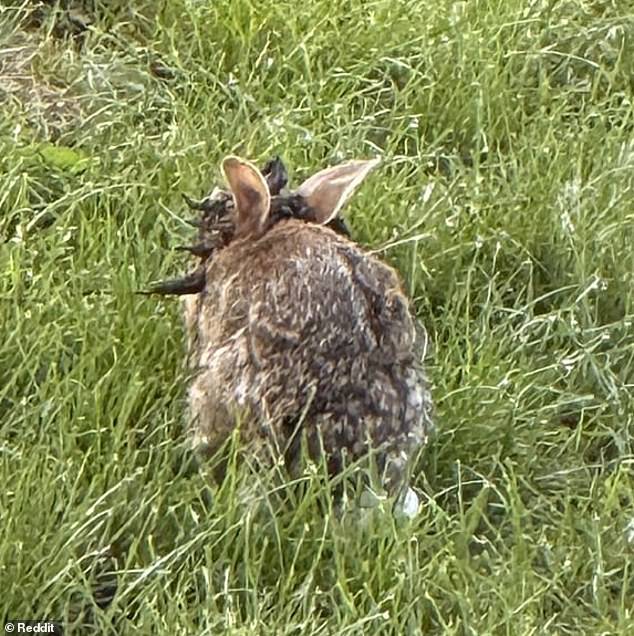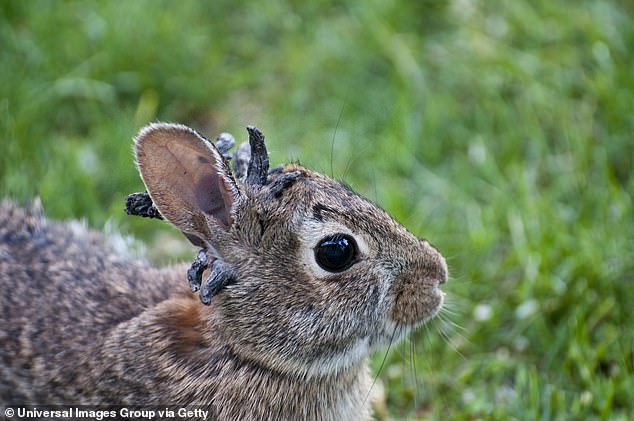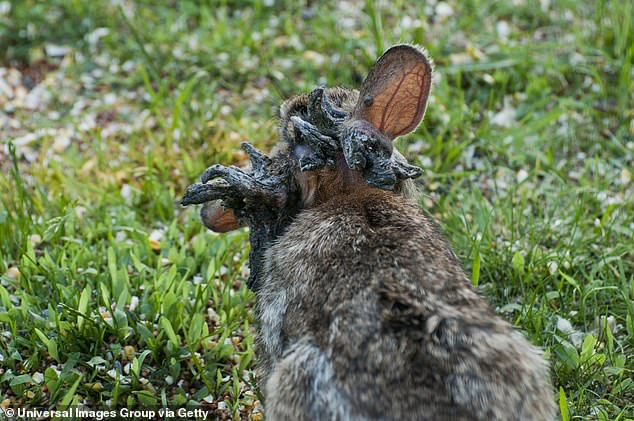A bizarre virus is turning ordinary rabbits in the US into grotesque, horned creatures with black, tentacle-like growths sprouting from their faces – and sightings are on the rise.
The mutated rabbits have been spotted multiple times in Fort Collins, Colorado.
Reports date back to 2024, when a local resident posted a photo online showing the creature’s entire head covered in black, spike-like protrusions.
Resident Susan Mansfield told 9News that she recently spotted a rabbit with black spines or ‘quills’ around its mouth.
‘It looked like black quills or black toothpicks sticking out all around its mouth,’ Mansfield said. ‘I thought he’d die off during the winter, but he didn’t. He came back a second year – and it grew.’
The rabbits are infected by the cottontail papilloma virus (CRPV), also known as Shope papilloma virus, which causes tumors to grow on or near the animal’s head.
Colorado Parks and Wildlife (CPW) has urged anyone who sees infected rabbits to stay away and not touch them.
CPW does not believe the virus can leap to other species, such as humans or pets, but is still urging the public to avoid the rabbits and not attempt to help them.

A user on Reddit posted an image in 2024 of a rabbit in Fort Collins, Colorado exhibiting signs of Shope papilloma virus

Shope papilloma virus leads to large growths on the head and face of rabbits and is spread by disease-carrying mosquitoes
Although these ‘Frankenstein’ rabbits have mainly been seen in Colorado recently, researchers noted that cottontail rabbits throughout the Midwest could become infected with the rare virus.
The virus spreads mainly via mosquitoes and ticks, which bite an infected animal and pass on the DNA-altering condition.
Scientists noted that SPV rarely spreads through direct contact between these rabbits, and there are no known cases of insects infecting people with it through a bite.
The first sign that a rabbit has the virus is red, raised spots on their skin that eventually turn into wart-like tumors.
In many cases, these warts develop into keratinized papillomas, the ‘horns’ and ‘tentacles’ seen growing out of midwestern rabbits.
However, some of the warts can turn into a squamous cell carcinoma, a serious skin cancer that can be deadly if it spreads and isn’t treated early.
Wildlife officials said the tentacles are harmless to the rabbits unless they grow from sensitive areas such as the eyes or mouth.
Some rabbits have lived with the growths for years, with Fort Collins locals reporting sightings of the same infected animals since 2024.

A normal cottontail rabbit with the virus. The first signs of SPV would be raised red spots on the skin (Stock Image)

In 2013, video of another rabbit with Shope papilloma virus (pictured here) captivated viewers online

The virus is not thought to be painful unless the growths affect a rabbit’s eyes or mouth
For pet owners fearing their rabbits could contract the virus, medical experts said the best way to prevent SPV is to keep rabbits away from pests, especially mosquitoes.
If an insect bite does infect a pet rabbit with the virus, veterinarians can surgically remove the tumors before they become malignant.
Occasionally the growths heal on their own, but locals say wild rabbits in the area tend to develop bigger and bigger horns.
The tumors can eventually become large enough to interfere with the rabbit’s ability to eat, causing them to die of starvation.

The horns created by Shope papilloma virus are often benign, but some cases of the virus can cause cancerous tumors to form (Stock Image)

Wildlife officials have noted that there is no threat to human health, but people are still warned not to touch infected rabbits
Some on social media have questioned whether euthanizing infected wild rabbits would stop the spread.
‘Is it more humane to kill them when [they’re] like that or just leave them alone?’ one person posted on Reddit.
Animal control officials in the US have not made any kind of recommendation supporting this, adding that the virus does not pose a public health risk to people.
Local wildlife officials have maintained that the best thing to do if you see these disfigured rabbits is to keep your distance and leave them undisturbed.












